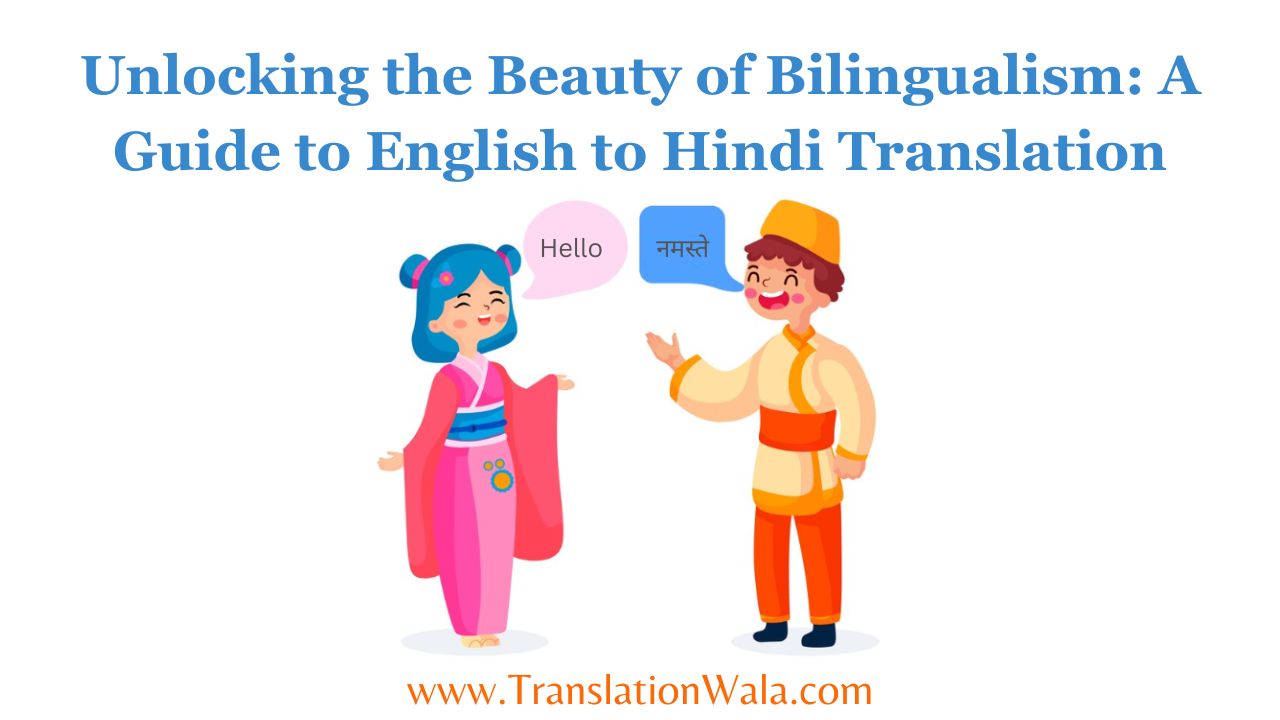India, with its many languages and lively cultures, is a great example of how important it is to be able to speak two languages. For many Indians, switching between English and Hindi is something they do every day. It makes their lives more interesting and lets them try new things. This guide is meant to help you enjoy being bilingual by looking at English to Hindi translation. It doesn’t matter if you’re a native Hindi speaker who wants to improve your English translation skills or an English speaker who wants to start learning Hindi.
Embracing the Nuances: Cultural Context and Wordplay
It’s not enough to just change words when translating from English to Hindi. It takes a lot of work to understand the cultural differences that are built into each language. It might seem easy, but “It’s raining cats and dogs.” The exact description wouldn’t work in Hindi. Instead, “आसमान बरस रहा है” (The sky is crying) paints a clearer picture. This shows how important cultural background is, because idioms and proverbs often have greater meanings that need to be figured out.
Playing with words makes translation even more beautiful and complicated. In Hindi, jokes and double entendres are very common, while in English, metaphors and similes are used a lot. A good translator is like an artist because they can capture the spirit of the original text and weave it into the target language like a fabric. Imagine translating a poem where the way the words fit together makes a picture. It’s a fun task to find the right Hindi words that not only say the same thing but also keep the rhythm and rhyme.
Beyond Grammar: Embracing the Flow of Language
Even though correct grammar is very important, focusing only on rules can slow down the translation process. Hindi’s open sentence structure and focus on intonation make it easier to come up with new ways to say the same thing. A translator needs to know the basic pace of both languages so that the translated text flows easily and doesn’t sound forced or off.
Think about the idea of “tone.” In English, we can use dry humor or choice of words to show sarcasm. Hindi, on the other hand, depends a lot on tone and small changes in language. It’s important to get the tone right while keeping the flow of the text intact if you want to get your point across.
Also Read: Odia Opulence: Unlocking Cultural Nuances with Seamless English to Odia Translation

Tools and Resources: Your Translation Allies
There are a lot of tools and resources available to interpreters in this day and age. Even though machine translation isn’t perfect, it can be a good place to start, especially for expert texts. Online dictionaries and glossaries are great for looking up hard-to-find words and culture terms. Language groups and platforms bring interpreters together, making it easier for them to work together and share what they know.
Don’t forget that the best tools are those that help you learn both languages better. Read a lot of Hindi books, watch movies, and listen to music. Have talks with native speakers and listen to a lot of different accents and languages. Learn the language as much as possible. This will help your readings become more natural and accurate.
A Rewarding Journey: Embracing the Power of Two Worlds
It’s not just about learning how to translate from English to Hindi; it’s also about crossing countries and seeing things from different points of view. By learning more, you’ll find the secret gems in each language, the cultural nuggets in every word, and the beauty of how two different languages can say the same thing in two different ways.
There will be hard times on this road, but the benefits are huge. You’ll be able to jump at new chances, meet with more people, and gain a better understanding of how rich and varied human conversation is. Remember that language is a live thing that changes all the time. Take pleasure in the process of learning and translating, and let the beauty of being bilingual draw you in.
Put in a lot of work, show attention, and love languages to get ready for this trip. You’ll be able to express yourself more freely and learn more about other countries as you learn how English to Hindi Translation. Don’t forget that language barriers can be broken with knowledge, kindness, and a love of writing. Say things that show how beautiful it is to be bilingual, where two worlds meet and make meaningful song.



